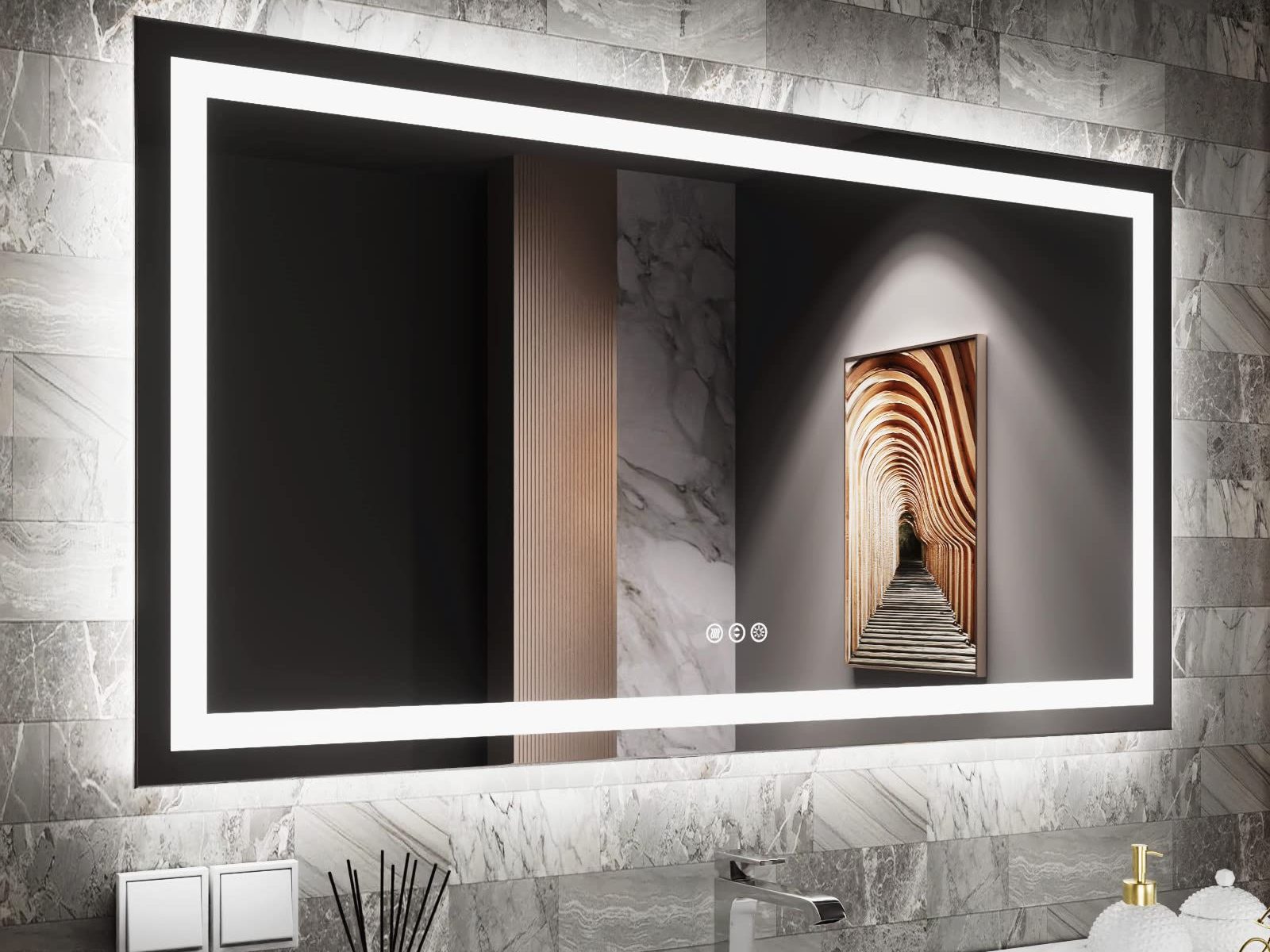

Concerned about your bathroom mirror LED lights eating up too much energy at home?
Mirror LED lights are a smart choice for energy efficiency, using less electricity than traditional bulbs.
In this article, we’ll dive into the cost-effective and energy-saving features of LED mirror lights.
The power consumption depends on the number of LEDs in the mirror. LEDs convert 95% of energy into light and only 5% into heat, ensuring efficiency.
LED mirrors have a long lifespan, lasting about 50,000 hours or 13 years. They’re designed for convenience, featuring motion sensors, touch controls, and voice commands.
Bluetooth mirrors often use energy-efficient LEDs, potentially lowering your electricity bill.
The typical hourly cost of operating mirrors with LED lights is approximately $0.013.
This estimate is based on an average LED mirror wattage of 30 watts and an electricity cost of $0.42 per kilowatt-hour.
The actual expense may vary based on the LED bulb wattage and local electricity rates. LED mirrors are renowned for energy efficiency, significantly reducing electricity bills.
LEDs use much less power than incandescent bulbs and can provide up to 50,000 hours of light, equivalent to about 13 years of use.
Here are some energy-saving suggestions for using an LED mirror:
Install motion sensors or timers with your LED mirror to ensure it’s only active when necessary, cutting down on energy use.
Many LED mirrors have dimmable settings. Lowering brightness when full light isn’t needed helps conserve energy.
Opt for lower-wattage LED bulbs, known for efficiency and up to 50,000 hours of light.
Switch off the LED mirror when not in use, especially for Bluetooth mirrors that are always connected.
Utilize reflective surfaces and mirrors to enhance natural light, minimizing the need for artificial lighting.
By implementing these energy-saving tips, you can decrease energy consumption and cut costs on your electricity bill while still enjoying the advantages of your LED mirror.
Absolutely, LED mirrors offer energy-saving settings, which include the following:
Many LED mirrors feature customizable brightness settings, letting users tailor the lighting to their preferences. This flexibility reduces energy usage when full illumination isn’t necessary.
Incorporating motion sensors or timers ensures your LED mirror is active only when required, effectively cutting down on energy consumption.
LED mirrors utilize light-emitting diodes (LEDs), known for their energy efficiency and extended lifespan compared to traditional bulbs.
This technology significantly reduces electricity consumption, leading to both environmental and cost savings.
By making use of these settings, you can effectively lower the energy consumption of your LED mirror and enjoy cost-efficient illumination.
LED lights used in mirrors, renowned for their energy efficiency, consume considerably less electricity than traditional incandescent bulbs.
With LEDs converting 95% of energy into light and only 5% into heat, LED mirror lights are designed for electrical efficiency.
These mirrors boast a long lifespan of around 50,000 hours, equivalent to approximately 13 years of use.
Incorporating features like motion sensors, touch controls, and voice activation, LED mirrors are not only reliable but also user-friendly.
Additionally, many utilize energy-efficient LEDs, contributing to reduced energy consumption and potential savings on electricity bills.
Overall, LED mirrors offer a balance of efficiency, durability, and convenience.